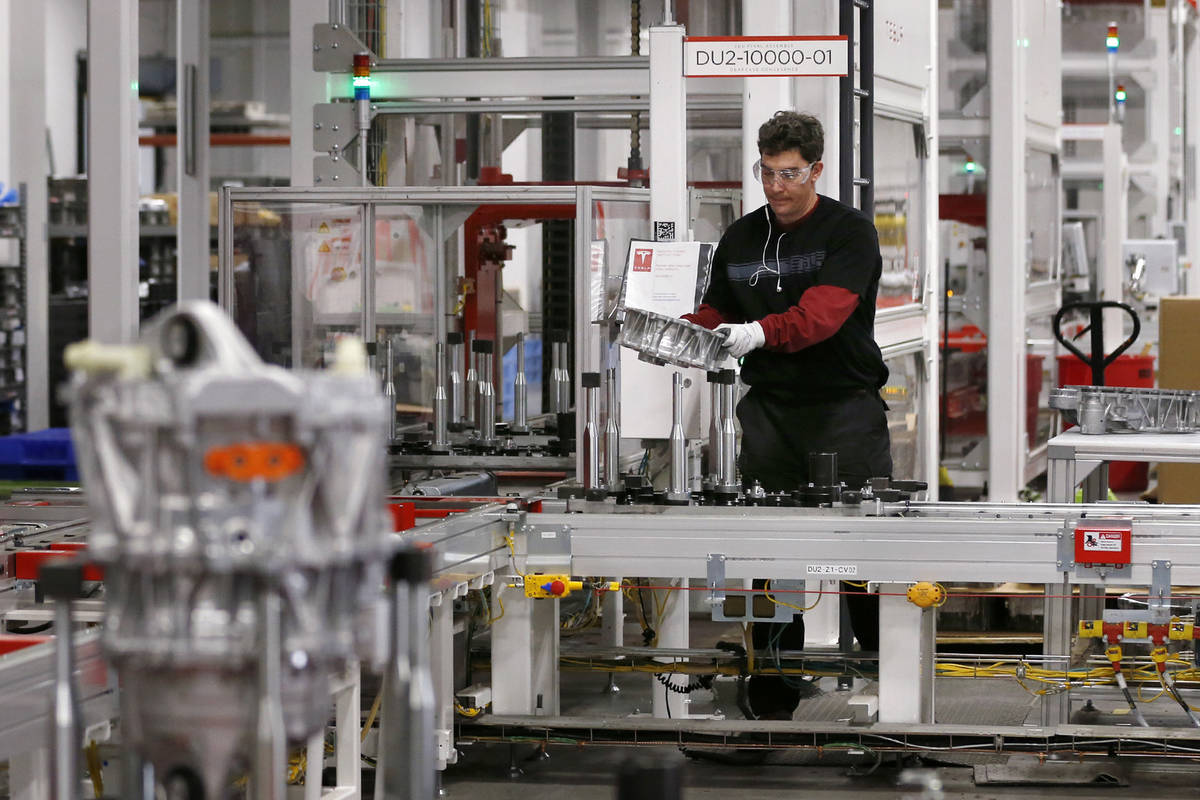EDITORIAL: Nevada’s manufacturing sector continues to grow
Nevada is among the U.S. states leading a resurgence of U.S. manufacturing — and Silver State officials should work to keep it that way.
The Wall Street Journal reported Wednesday that the Southwest — Texas, Arizona, New Mexico and Oklahoma — has led the way over the past four years in manufacturing output. And Nevada has crashed the party. “Those states plus Nevada added more than 100,000 manufacturing jobs from January 2017 to January 2020, representing 30 percent of U.S. job growth in that area,” the paper noted.
One of the success stories cited is Haas Automation, a California-based company that plans to build a plant in Henderson and employ 500 workers by 2023, rising to more than 1,500 by 2028, according to its projections. Haas is the largest producer of precision tools used on American assembly lines. Many of Nevada’s manufacturing enterprises are small to medium companies that specialize in diverse areas, including electronics, textiles, chemicals and industrial machinery.
The Journal report confirms an analysis last year by economist Ken Voytek of the National Institute of Standards and Technology. Mr. Voytek included Nevada and Arizona in his Group One of nine states “that saw real manufacturing GDP grow by a compound annual growth rate of more than 3 percent between 2009 and 2019, about twice as high as the national rate.”
Not surprisingly, some of this growth — in Nevada and elsewhere — has come at the expense of our deep blue western neighbor. Arizona, Texas and Nevada have seen thousands of workers relocate from California in recent years. Company executives and site-selection firms say that “higher taxes and steep housing costs in the Golden State are prompting production firms to look elsewhere,” the Journal reports.
Meanwhile, the Southwest region has become a lure because of “open land, local tax breaks and a growing supply of tech-savvy workers,” the paper observed.
Nevada for nearly a decade has indeed employed a “tax abatement” strategy for incoming businesses as part of its economic diversification approach. But that carries high risks involving empty promises and taxpayer liability, while shorting communities of the resources necessary to deal with growth. As California’s predicament indicates, a far better approach is to maintain a welcoming business and regulatory climate for innovation and entrepreneurship while avoiding heavy-handed policies that unnecessarily drive up housing, labor and other costs.
Politicians “may need to think how their business climate effects differences in state economic performance,” Mr. Voytek concluded. The bottom line for Nevada lawmakers and local governments: The right policies matter when it comes to attracting and keeping well-paying jobs — and the wrong ones matter when it comes to losing them.






















